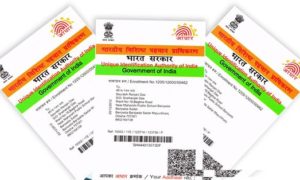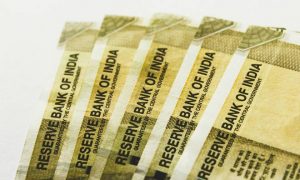The Reserve Bank of India (RBI) on Thursday proposed to increase the per transaction payment limit from Rs 200 to Rs 500 for UPI Lite in offline mode, and announced other measures to further deepen the reach and use of digital payments in the country.
Read More: Tomato Prices Skyrocket: Know What RBI Guv Das Said On Rising Vegetable Prices
Currently, there is a limit of Rs 200 per transaction and an overall limit of Rs 2,000 per payment instrument for small-value digital payments in offline mode, including for the National Common Mobility Card (NCMC) and UPI Lite.
“There have been demands for enhancing these limits. To encourage wider adoption of this mode of payments and bring in more use cases into this mode, it is now proposed to increase the per transaction limit to Rs 500,” RBI Governor Shaktikanta Das said.
The overall limit is, however, retained at Rs 2,000 to contain the risks associated with the relaxation of two-factor authentication, and instructions in this regard will be issued shortly, he added.
With the objective of harnessing new technologies for enhancing the digital payments experience for users, Das said, it is proposed to enable ‘Conversational Payments’ on UPI, which will enable users to engage in conversation with AI-powered systems to make payments and introduce offline payments on UPI using near-field communication (NFC) technology through ‘UPI-Lite’ on-device wallet.
UPI, with its ease of usage, safety and security, and real-time feature, has transformed the digital payment ecosystem in India. The addition of many new features over time has enabled UPI to facilitate the diverse payment needs of the economy.
As Artificial Intelligence (AI) is becoming increasingly integrated into the digital economy, conversational instructions hold immense potential in enhancing the ease of use, and consequently reach, of the UPI system, he said.
It is, therefore, proposed to launch an innovative payment mode viz., ‘Conversational Payments’ on UPI, that will enable users to engage in a conversation with an AI-powered system to initiate and complete transactions in a safe and secure environment, he said.
This channel will be made available in both smartphones and feature phones-based UPI channels, thereby helping in the deepening of digital penetration in the country, he said.
The facility will, initially, be available in Hindi and English and will subsequently be made available in more Indian languages and instructions to NPCI will be issued shortly, he added.
To increase the speed of small-value transactions on UPI, an on-device wallet called ‘UPI-Lite’ was launched in September 2022 to optimise processing resources for banks, thereby reducing transaction failures.
The product has gained traction and currently processes more than ten million transactions a month.
“To promote the use of UPI-Lite, it is proposed to facilitate offline transactions using Near Field Communication (NFC) technology. This feature will not only enable retail digital payments in situations where internet/telecom connectivity is weak or not available, it will also ensure speed, with minimal transaction declines. Instructions to NPCI will be issued shortly,” he said.
Read More: RBI introduces offline payment via UPI. Here is how you will benefit
Akash Sinha, CEO and co-founder of Cashfree Payments, said, “The Reserve Bank of India (RBI) has once again emphasised the significance of promoting digital payments in its latest Monetary Policy announcement. By proposing innovative concepts such as ‘conversational payments’ and ‘offline capability’ on the Unified Payments Interface (UPI), the central bank is wholeheartedly advocating the integration of cutting-edge technologies like Artificial Intelligence (AI) and Near Field Communication (NFC) through ‘UPI-Lite’ on-device wallet, within the realm of payments.”
He added that in a broader context, the RBI’s concerted efforts to enhance the adoption and effectiveness of digital payments are fostering a robust and competitive environment for all stakeholders involved.
“Moreover, the ingenuity and progress achieved in India’s digital payments landscape are poised to strengthen our global standing, particularly concerning UPI and digital payments. This collective advancement is set to elevate India’s stature on the global stage, underscoring our nation’s prowess and leadership in the realm of innovative payment solutions,” he said.
Adelia Castelino, co-founder and managing director of payment aggregator In-Solutions Global, said, “We welcome the RBI’s proposal to introduce conversational payments in UPI. The introduction of offline payments in UPI through near field technology via UPI Lite is a promising development. Introducing NFC technology for offline payments as proposed by the RBI governor promises faster low-value transactions and could transform the payment ecosystems.”
Read More: RBI MPC Decision: Is There Any Impact On Home Loan EMIs? What Borrowers Must Know
She added that the decision to enhance the transaction limit for small value payments in offline mode from Rs 200 to Rs 500 is a positive move. This higher limit will accommodate a broader spectrum of daily transactions, making UPI Lite a viable option for various day-to-day expenses. It will also encourage more users to adopt digital payment methods for their convenience.





































